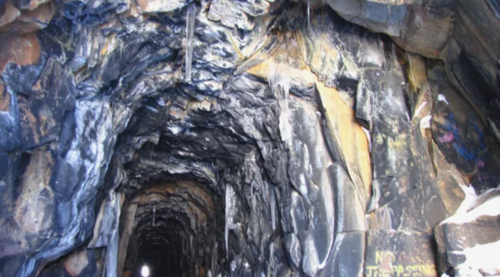

In the 1860s, the United States embarked on an ambitious project that would change the course of the country's history. For decades, entrepreneurs and engineers had dreamed of building a railroad that would span the continent from ocean to ocean. The Transcontinental Railroad, once completed, allowed Americans to settle the west, to transport goods and expand commerce, and to travel the width of the country in days, instead of weeks.
:max_bytes(150000):strip_icc():format(webp)/GettyImages-515359642-59ca94256f53ba00116becad.jpg)
Getty Images/Bettmann/Contributor
By mid-1862, the United States was entrenched in a bloody Civil War that strained the resources of the young country. Confederate General "Stonewall" Jackson had recently succeeded in driving the Union army out of Winchester, Virginia. A fleet of Union naval ships had just seized control of the Mississippi River. It was already clear that the war wouldn't end swiftly. In fact, it would drag on for three more years.
President Abraham Lincoln was somehow able to look beyond the urgent needs of the country at war, and focus on his vision for the future. He signed the Pacific Railway Act into law on July 1, 1862, committing federal resources to the ambitious plan to build a continuous rail line from the Atlantic to the Pacific. By the decade's end, the railroad would be completed.
:max_bytes(150000):strip_icc():format(webp)/CentralPacificcamp-59c9d86c22fa3a0011df12eb.jpg)
Pictures of the American West/National Archives and Record Administration/Alfred A. Hart.
When it was passed by Congress in 1862, the Pacific Railway Act permitted two companies to begin construction on the Transcontinental Railroad. The Central Pacific Railroad, which had already built the first railroad west of the Mississippi, was hired to forge the path east from Sacramento. The Union Pacific Railroad was granted the contract to lay track from Council Bluffs, Iowa west. Where the two companies would meet was not predetermined by the legislation.
Congress provided financial incentives to the two companies to get the project underway, and increased the funds in 1864. For each mile of track laid in the plains, the companies would receive $16,000 in government bonds. As the terrain got tougher, the payouts got bigger. A mile of track laid in the mountains yielded $48,000 in bonds. And the companies got land for their efforts, too. For each mile of track laid, a ten square mile parcel of land was provided.
:max_bytes(150000):strip_icc():format(webp)/GettyImages-463910687-59caa4b8054ad900107a30dd.jpg)
Getty Images/Oxford Science Archive/Print Collector/
With most of the country's able-bodied men on the battlefield, workers for the Transcontinental Railroad were initially in short supply. In California, white workers were more interested in seeking their fortunes in gold than in doing the back-breaking labor required to build a railroad. The Central Pacific Railroad turned to Chinese immigrants, who had flocked to the U.S. as part of the gold rush. Over 10,000 Chinese immigrants did the hard work of preparing rail beds, laying tracking, digging tunnels, and constructing bridges. They were paid just $1 per day and worked 12-hour shifts, six days per week.
The Union Pacific Railroad only managed to lay 40 miles of track by the end of 1865, but with the Civil War drawing to a close, they could finally build a workforce equal to the task at hand. The Union Pacific relied mainly on Irish workers, many of whom were famine immigrants and fresh off the battlefields of the war. The whiskey-drinking, rabble-rousing work crews made their way west, setting up temporary towns that came to be known as "hells on wheels."
:max_bytes(150000):strip_icc():format(webp)/donner_pass_tunnel-59caa887d963ac0011a212f3.jpg)
Flickr user ChiefRanger (CC license)
Drilling tunnels through mountains of granite might not sound efficient, but it resulted in a more direct route from coast to coast. Tunnel excavation was no easy engineering feat in the 1860s. Workers used hammers and chisels to pick away at the stone, progressing little more than one foot per day despite hour after hour of work. The excavation rate increased to nearly 2 feet per day when workers started using nitroglycerine to blast away some of the rock.
The Union Pacific can only claim four of the 19 tunnels as their work. The Central Pacific Railroad, which took on the nearly impossible task of building a rail line through the Sierra Nevadas, gets credit for 15 of the toughest tunnels ever constructed. The Summit Tunnel near Donner Pass required workers to chisel through 1,750 feet of granite, at an elevation of 7,000 feet. Besides battling the rock, the Chinese workers endured winter storms that dumped dozens of feet of snow on the mountains. An untold number of Central Pacific workers froze to death, their bodies buried in snow drifts up to 40 feet deep.
:max_bytes(150000):strip_icc():format(webp)/GettyImages-142627305-59ca96a4b501e80010bd1e96.jpg)
Getty Images/Underwood Archives
By 1869, the two railroad companies were getting close to the finish line. The Central Pacific work crews had made their way through the treacherous mountains and were averaging a mile of track per day east of Reno, Nevada. The Union Pacific workers had laid their rails across the Sherman Summit, a full 8,242 feet above sea level, and constructed a trestle bridge spanning 650 feet across the Dale Creek in Wyoming. Both companies picked up the pace.
It was apparent the project was nearing completion, so newly-elected President Ulysses S. Grant finally designated the place where the two companies would meet – Promontory Point, Utah, just 6 miles west of Ogden. By now, the competition between the companies was fierce. Charles Crocker, the construction supervisor for the Central Pacific, bet his counterpart at the Union Pacific, Thomas Durant, that his crew could lay the most track in a single day. Durant's team made an admirable effort, extending their tracks 7 miles in a day, but Crocker won the $10,000 wager when his team laid 10 miles.
The Transcontinental Railroad was completed when the final "Golden Spike" was driven into the rail bed on May 10, 1869.
